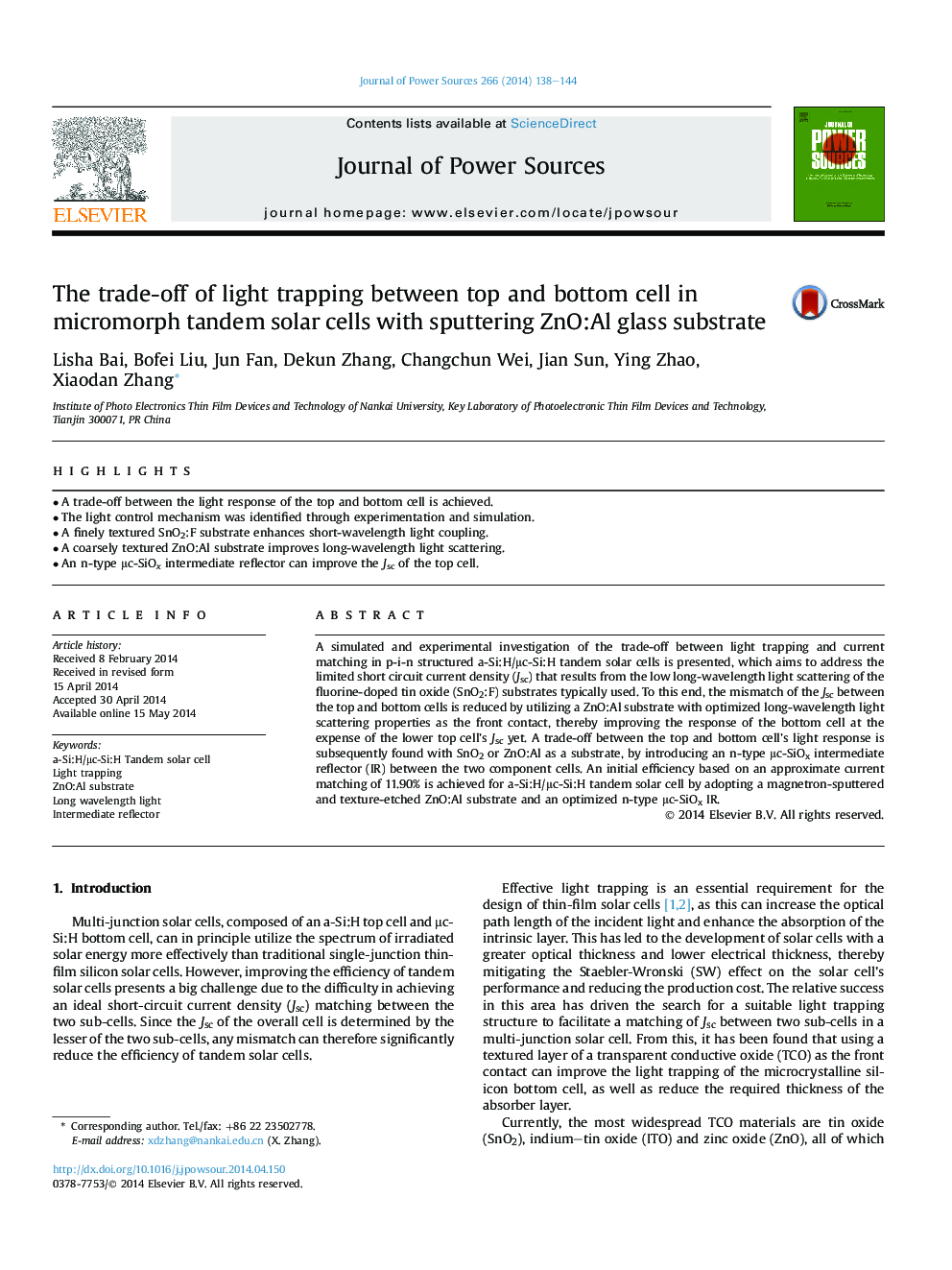| Article ID | Journal | Published Year | Pages | File Type |
|---|---|---|---|---|
| 1286781 | Journal of Power Sources | 2014 | 7 Pages |
•A trade-off between the light response of the top and bottom cell is achieved.•The light control mechanism was identified through experimentation and simulation.•A finely textured SnO2:F substrate enhances short-wavelength light coupling.•A coarsely textured ZnO:Al substrate improves long-wavelength light scattering.•An n-type μc-SiOx intermediate reflector can improve the Jsc of the top cell.
A simulated and experimental investigation of the trade-off between light trapping and current matching in p-i-n structured a-Si:H/μc-Si:H tandem solar cells is presented, which aims to address the limited short circuit current density (Jsc) that results from the low long-wavelength light scattering of the fluorine-doped tin oxide (SnO2:F) substrates typically used. To this end, the mismatch of the Jsc between the top and bottom cells is reduced by utilizing a ZnO:Al substrate with optimized long-wavelength light scattering properties as the front contact, thereby improving the response of the bottom cell at the expense of the lower top cell's Jsc yet. A trade-off between the top and bottom cell's light response is subsequently found with SnO2 or ZnO:Al as a substrate, by introducing an n-type μc-SiOx intermediate reflector (IR) between the two component cells. An initial efficiency based on an approximate current matching of 11.90% is achieved for a-Si:H/μc-Si:H tandem solar cell by adopting a magnetron-sputtered and texture-etched ZnO:Al substrate and an optimized n-type μc-SiOx IR.
